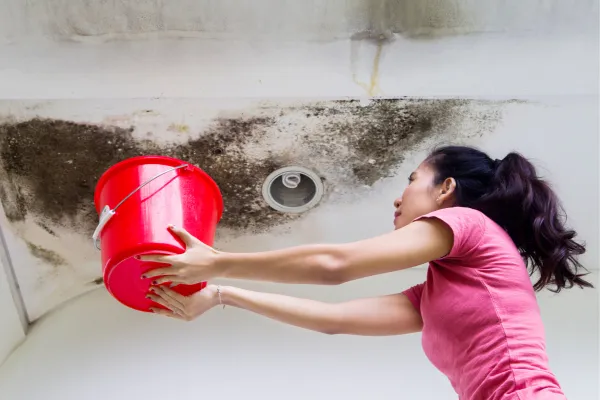Welcome to Our Blog
Insights and tips to keep your living environment safe and healthy.

Understanding Mold Risks Amid Heavy Rains in Santa Barbara
It’s been a wet start to 2024 and that’s great for water supply in Santa Barbara, but the intensity of the storms has caused some flooding and landslide issues. According to data from the County Flood Control District, the third storm of the 2024 water year was enough to push our county above average for the year to date. That’s great news, but what if your property got too much water in the storm?
🌧️ Heavy rains are making headlines, and if you're dealing with moisture issues at home, mold might be on your mind. Let's explore how heavy rains and environmental factors boost mold risk in Santa Barbara. Plus, we'll share preventive tips to protect your property. Let's dive in! 💦🏠

Understanding Mold Growth:
Mold is a type of fungus that thrives in moist environments. In Santa Barbara, where rainfall is relatively rare compared to other regions, heavy rains can catch residents off guard. When excess water accumulates in homes and businesses due to leaks, flooding, or high humidity levels, it creates the perfect breeding ground for mold spores.
Factors Contributing to Mold Growth:
Several factors contribute to mold growth in Santa Barbara homes and businesses, especially during periods of heavy rain:
1. Moisture: Heavy rains can lead to water intrusion through leaks in roofs, windows, or foundations. Additionally, high humidity levels can create condensation indoors, providing the moisture mold needs to thrive.
2. Warmth: Santa Barbara's mild climate provides favorable temperatures for mold growth, especially during the rainy season when temperatures remain relatively warm.
3. Organic Matter: Common building materials such as wood, drywall, and insulation provide ample nutrients for mold to feed on, further facilitating its growth.
4. Poor Ventilation: Inadequate ventilation exacerbates moisture buildup indoors, creating stagnant air and promoting mold growth in poorly ventilated areas like basements, attics, and bathrooms.
5. Time: Mold can begin to grow within 24 to 48 hours of moisture exposure, highlighting the importance of prompt action to address water damage and prevent mold proliferation.

Impact on Homes and Businesses:
Unchecked mold growth can lead to various problems for Santa Barbara residents and businesses, including:
1. Property Damage: Mold can cause structural damage to buildings by deteriorating organic materials such as wood and drywall.
2. Health Risks: Exposure to mold spores can trigger allergic reactions, respiratory issues, and other health problems, particularly in vulnerable individuals such as children, the elderly, and those with pre-existing respiratory conditions.
3. Odor and Aesthetic Concerns: Mold growth often produces a musty odor and unsightly stains on walls, ceilings, and other surfaces, detracting from the aesthetic appeal of properties.

Preventive Measures:
To mitigate the risk of mold growth in Santa Barbara homes and businesses, consider implementing the following preventive measures:
1. Address Water Damage Promptly: Repair leaks, dry out wet areas, and remove standing water as soon as possible to prevent mold from taking hold.
2. Maintain Proper Ventilation: Ensure adequate ventilation in bathrooms, kitchens, and other moisture-prone areas to reduce humidity levels and promote air circulation.
3. Monitor Indoor Humidity: Use a hygrometer to monitor indoor humidity levels and take steps to maintain optimal humidity levels (ideally between 30% and 50%).
4. Inspect and Maintain Property: Regularly inspect roofs, windows, plumbing systems, and foundations for signs of leaks or water damage, and address any issues promptly. If you need help with this, please give us a call.
Conclusion
While Santa Barbara's heavy rains bring much-needed relief to its parched landscapes, they also pose a risk of mold growth in homes and businesses. By understanding the factors contributing to mold proliferation and implementing preventive measures, residents and business owners can safeguard their properties and ensure a healthy indoor environment for themselves and their occupants. Stay vigilant, stay proactive, and protect your property from the hidden threat of mold. If you think you might have mold growth, contact Advanced Clean Air Solutions today for a mold test.
Copyright @ 2025 - All rights reserved
Advanced Clean Air Solutions, LLC
351 Paseo Nuevo 2nd Floor #1033
SANTA BARBARA, CA 93101

